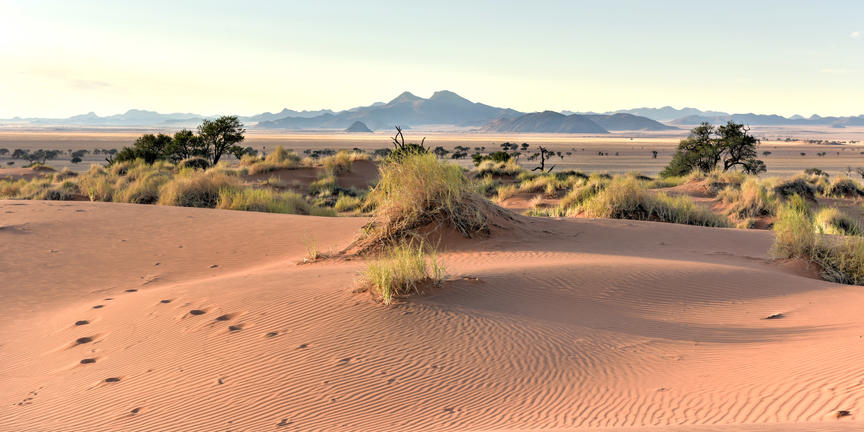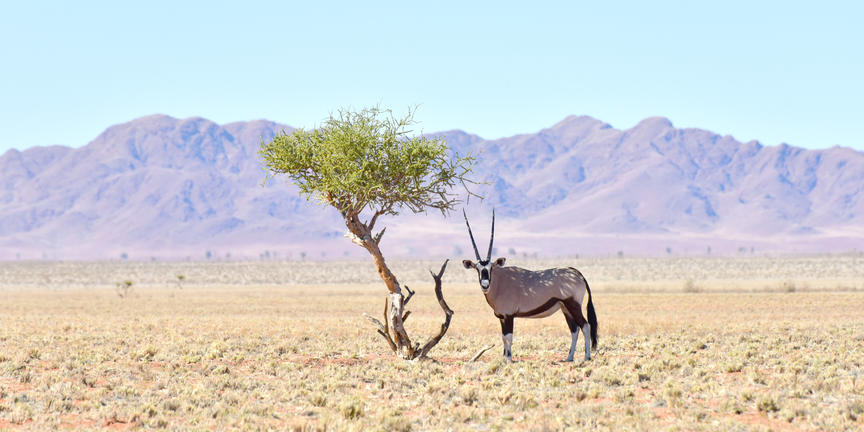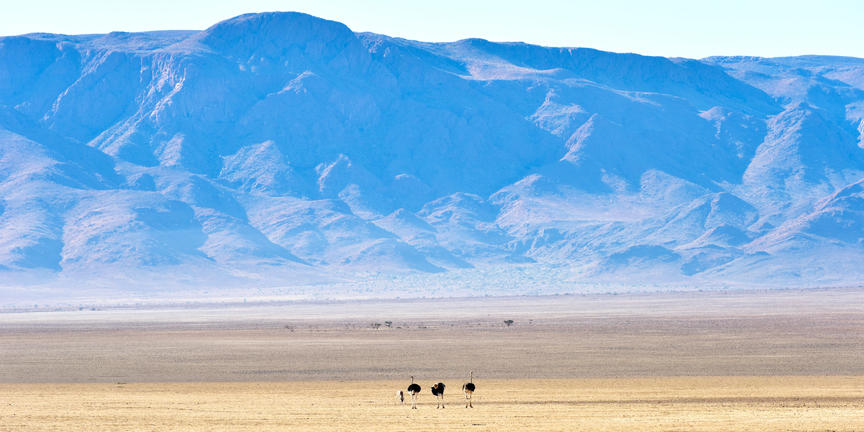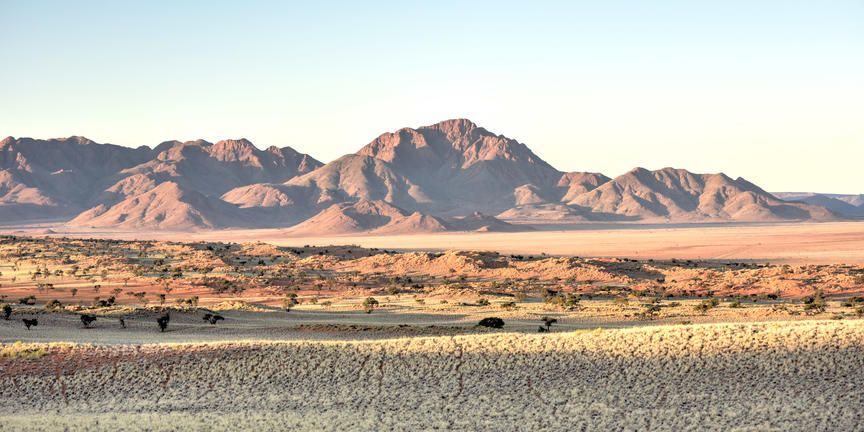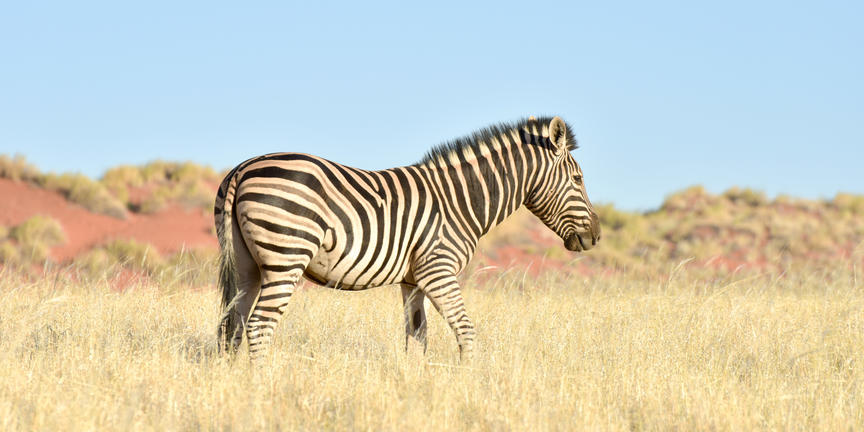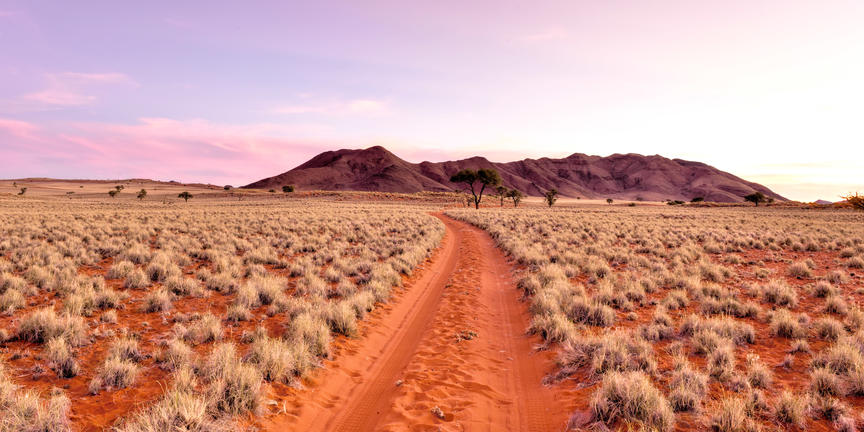This reserve originated in 1984 as a passion of the late J.A. Brückner, who had a dream to extend desert frontiers and this began by integrating numerous livestock farms in the area. To date the reserve is comprised of 17 former livestock farms and with no fences between them, the NamibRand became an exclusive reserve through which animals could roam freely across the expanse of this incredible environment and natural habitat.
It encompasses the unique ecology of the southwest Namib Desert, with a focus on protecting biodiversity and sustainability to facilitate seasonal migration of wildlife routes. The area is known to host numbers around 3200 oryx and more than 12,400 springbok as well as kudu, Hartmann’s and Burchell’s zebra, giraffe, klipspringer, steenbok, hartebeest and baboons. Predators include leopard, Spotted and Brown hyena, black-backed jackal, aardwolf, bat-eared fox, Cape fox, African wildcat, caracal and genet. More than 150 species of bird have been recorded in the area along with numerous species of different fauna and flora.
In 1992, the NamibRand Nature Reserve was registered as a non-profit reserve and is financially self-sustaining through high quality–low impact tourism. A balance that allows for self-sustainable conservation. All lodges that operate inside the reserve have been limited to 20 beds each, in essence that is 1 bed for every 1000 hectares, making the human footprint in such a vast area, barely noticeable and of course adds to the remote and unique exclusivity to stay in such a place.
Operating inside the NamibRand is Kwessi Dunes and the Wolwedans Collection, the Family Hideout, Tok Tokkie Trails, Namib Sky Adventures (hot air ballooning) and the NRCF (NamibRand Conservation Fund), which is a non-profit organisation that focuses on environmental conservation and research. The two main beneficiaries of the NRCF are the NRAC (NamibRand Desert Research and Awareness Centre) and NaDEET (Namib Desert Environmental Education Trust), which is a non-profit organisation and educational centre empowering youth to make decisions for a sustainable future.
The NamibRand Reserve is also an International Dark Sky Reserve that focuses on the preservation of the star-filled night skies. With limited light pollution over a vast area, it has one of the darkest night skies in the world. You won’t find a brighter night sky than this in Namibia. It really is something to experience and just another highlight that makes this amazing area so special.
Bordering on the NamibRand Reserve is the And Beyond Sossusvlei Private Reserve, and although somewhat smaller (if you can call 12,715 hectares small), the spectacular scenery offers an equally impressive landscape of iconic red sand dunes and mountain vistas. Here you will find one of Namibia's most luxurious offerings, Sossusvlei Desert Lodge.
You may not be all that close to the famed Sossusvlei, but this general area, south of the Tsaris Mountains and north from and including the Tiras Mountain Conservancy is well worth the visit. The NamibRand and surrounding parts cover vast open expanses of desert landscapes, savanna plains and the Rooirand escarpment. Besides the Duwisib Castle near Betta, there aren't any other 'highlights' in these parts. The major attractions here are the reserves themselves and the all-incredible nature and beauty of these remote areas.
Although it may seem like there is not much out there, on a map these areas seem bare with few roads, the rare lodges that are nestled in these parts are rather special, for exactly this reason. Visit Kanaan Desert Retreat to see a cheetah on a red sand dune and Sonop is easily one of the most remote and most luxurious properties in the country. A stay in these parts is warranted for sure, whether a stopover or as a destination, rightfully, on its own.
